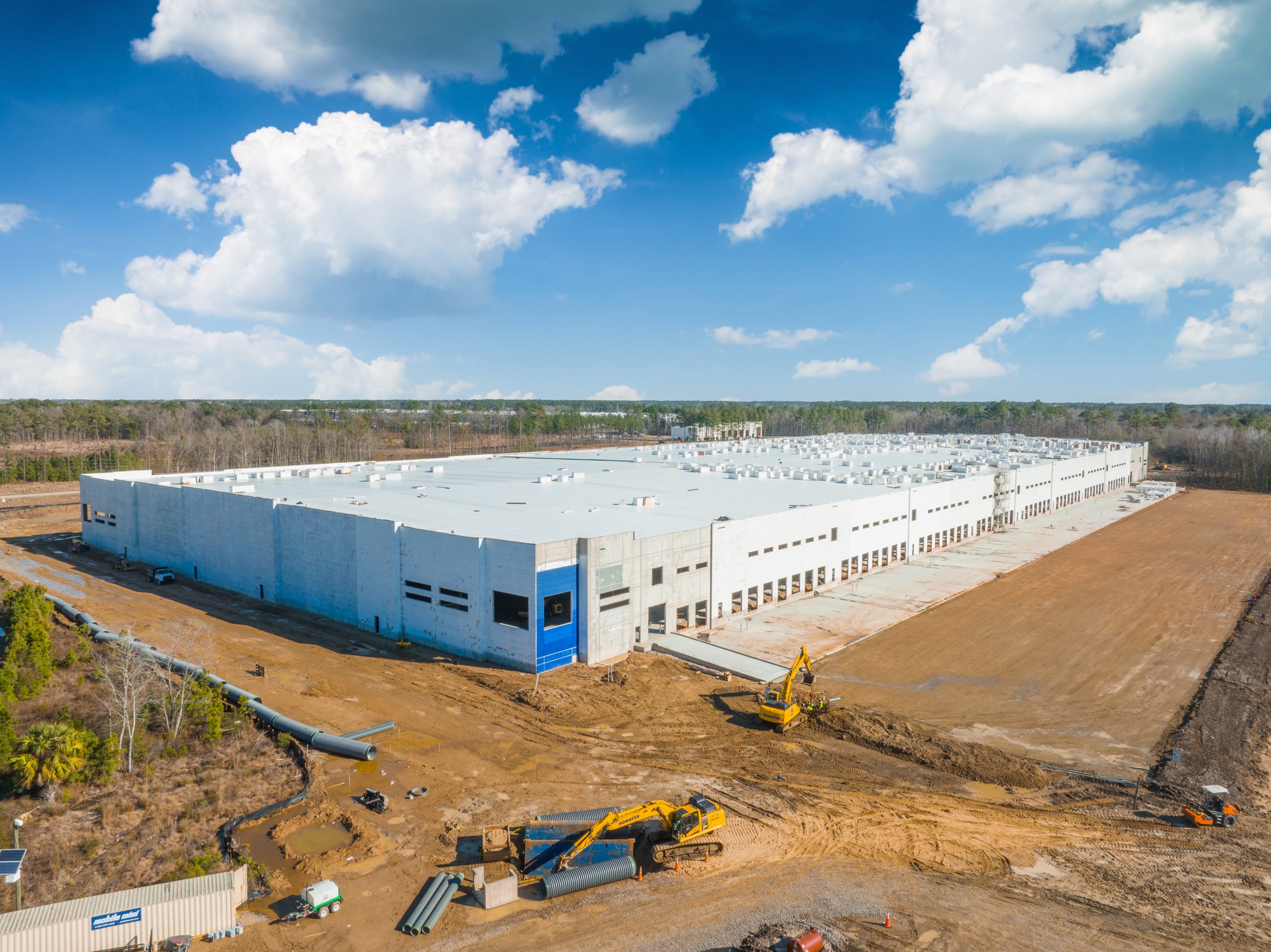With speculative building lagging nationally, Georgia offers room to grow
According to commercial real estate brokers, demand at Georgia’s ports is driving enough distribution center construction to help cushion the Peach State against a national slowdown in speculative building.
“That makes Savannah and the state of Georgia a bright spot for logistics operators looking to grow,” said Georgia Ports Authority Executive Director Griff Lynch. “At GPA, we’re expanding our berths to handle bigger ships and adding container yard space, with annual capacity at the Port of Savannah advancing by 50 percent over the next two years. Similarly, private developers are making significant investment in new capacity, set to come online in 2023.”
Demand for space remains strong, according to Chris Tomasulo, senior managing director in JLL’s Industrial Services Group in Atlanta.
“Last year, we received a record number of inquiries by users interested in Savannah – from 5-acre storage yards to 2 million square-foot import centers,” Tomasulo said. “2023 has started off strong with many clients moving forward to secure buildings or furthering their investigation of warehousing solutions in Savannah.”
Tomasulo said the Savannah market is attracting interest for several reasons, including “the strength of the GPA, its efficiency and scalability to accommodate future growth, and the overall cost of doing business in Georgia compared to New York and California.” He also credited the positive political climate, aggressive incentives at the state level, and availability of industrial space for companies to locate.
While development capital for speculative buildings has been “paused” across the country, according to CBRE Executive Vice President Blaine Kelley, the Atlanta and Savannah areas have a combined 31 million square feet of speculative building already being developed.
Near-port development accounts for 11 million square feet of speculative industrial space coming to the Savannah market. Another 20 million square feet of spec space is under construction in Atlanta – nearly half of the new buildings CBRE is tracking in Georgia’s largest market.
“We have a total of more than 40 million square feet under construction, counting spec and build-to-suit projects – second only to Dallas,” Kelley said. “There are several drivers, including land, growth of the area, population growth, port activity and being a major logistics center for the East.”
Stacy Watson, director of economic and industrial development at GPA, agreed that available space, along with the ports, Class I rail service and Atlanta’s international airport are major draws for industry.
“We work daily with the Georgia Department of Economic Development and economic development authorities across the state to pair potential employers with the right location,” Watson said. “Additionally, GPA’s online site selection tool helps those considering Georgia to find locations by county, property size and type.”
David Sink, principal in the Savannah office of Colliers International, said continued private investment is needed.
“At the end of the third quarter in Calendar Year 2022, the vacancy rate in the Savannah industrial market was 1 percent,” Sink said. “There are 22 spec buildings under construction, amounting to 11.6 million square feet.”
Sink added that site work has commenced on another 22 spec buildings, which would deliver another 14.5 million square feet. Seven additional spec buildings have been proposed. Should these reach development, another 3.5 million square feet would reach the market.
That doesn’t count another eight build-to-suit projects currently under way, which will add 8.2 million square feet . In all, 37.8 million square feet of new industrial space is either under construction or planned for the Savannah area.
“With today’s interest rate environment, it’s going to be harder for more investors to get into the market, nationally,” Sink said. “However, in Savannah through 2023, there is a great deal of capacity in the pipeline.”
Veterans Parkway
Capital Development Partners is building two warehouses on Veterans Parkway, five miles from the Port of Savannah. The buildings are 1.45 million and 982,800 square feet, respectively.
SGIH
Savannah Gateway Industrial Hub Building 1E, a 396,550 square-foot facility with dual rail (NS & CSX) will become available June 2023. Represented by Colliers International.
Rockingham
Rockingham Building 10, a 413,230 square-foot warehouse will become available March 2023. Represented by Colliers International.
Interstate West
Interstate West, a 637,868 square-foot facility represented by Colliers International will become available March 2023.
Dean Forest Road
CenterPoint Properties is developing a 348,000 square-foot class A warehouse and 4.5-acre concrete container yard on Dean Forest Road in Savannah. The spec project, expected to be complete later this summer, has been fully leased to Port City Logistics. CenterPoint has also started construction on a neighboring property for a 396,000 square-foot facility that has not yet been leased. The sites are approximately two miles from the Port of Savannah.
